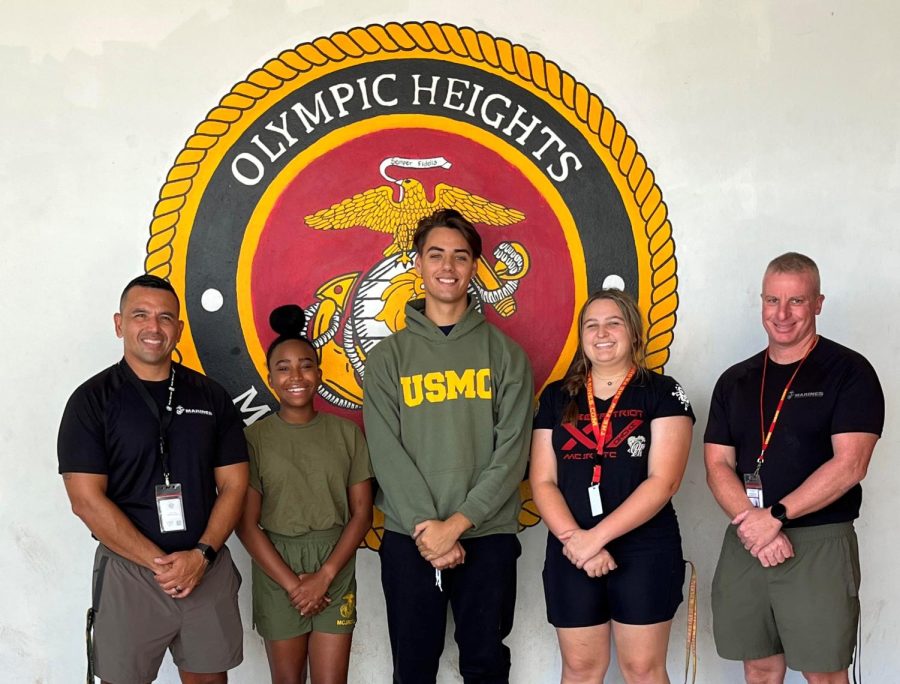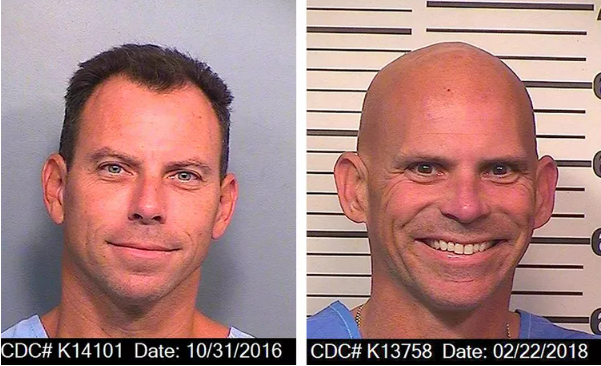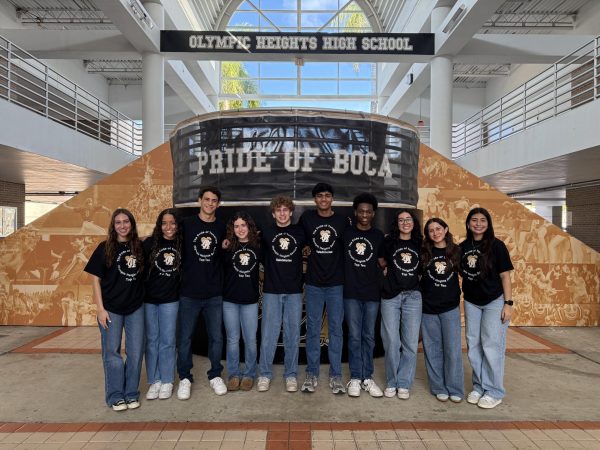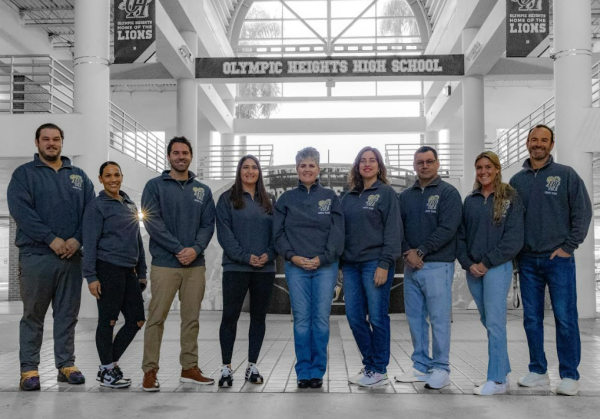Olympic Heights Marine Corps JROTC program offers students a pathway to success through the lens of leadership
The Olympic Heights Marine Corps JROTC are lead by (from left): instructor Master Sergeant Carlos Jarquin, Executive Officer Naika Pierre, Battalion Commander Christopher Sandlin, Sergeant Major Lillian Philips, and instructor Master Sergeant Wayne Byron.
Students at Olympic Heights are not unfamiliar with the sight of those of their peers who walk the halls in camouflage uniforms. These camo-clad students are members of OH’s chapter of the Marine Corps Junior Reserve Officers Training Corps, otherwise known as MCJROTC.
Despite popular belief, JROTC is not solely focused on recruiting students into the military. It is a program dedicated to pushing and supporting students through a lens of leadership. “It uses a military type of style to instill leadership, discipline, and responsibility in students,” said senior Lance Corporal Christopher Chen. Not only does it use militaristic learning methods, but the Marine Corps funds the program as well.
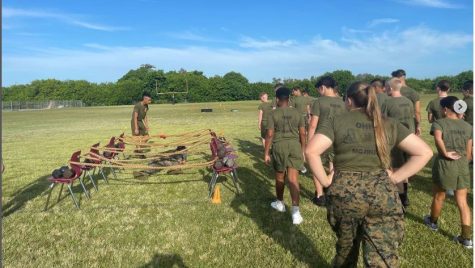
The OH MCJROTC is under the direction of instructors Master Sergeants Wayne Byron and Carlos Jarquin. Jarquin explains that MCJROTC is “a program for students to learn accountability.” The most prominent way students show accountability is on mandatory uniform days. On these days, cadets are expected to meet specific criteria regarding their uniform and hygiene. This instills a sense of pride and responsibility with the care and preparation of this uniform.
JROTC benefits students pursuing a multitude of career paths, as it aids with community service, college applications, and universal life skills. Chen said, “I want to become an officer in the United States Marine Corps, so I want to use JROTC as the first couple of steps that I take to prepare me for ROTC in college.”
In addition, JROTC provides participants with the opportunity to learn to speak up and advocate for themselves. “It will help me on an individual level with being confident, speaking with others, and being socialized in a work environment,” said senior Lance Corporal Gavin Goodner. “It has already helped with the job I have.”
For some members, JROTC is more than a class. Through team building and cooperation, the program has developed a sense of community and is considered a second family to many of its members. Senior Cyber Patriot Commander Matthew Berry said, “It’s not just a class; it eventually becomes a lifestyle and a family.”
A student-run program, MCJROTC allows cadets to run the program under the supervision and direction of the Master Sergeants. “You get to understand how to work as a unit,” noted senior Staff Sergeant Julian Haynes. The head staff are the three figureheads of the program who oversee all offices of power and direct the battalion.
The highest-ranked officer in the program is senior Battalion Commanding Officer Christopher Sandlin. Sandlin joined JROTC his freshman year without realizing the impact it would have on him. By his second year in the program, he was already commanding the Drill Team, and he feels that JROTC has helped him take the world head-on. Sandlin hopes to enlist in the U.S. Army as a cyber warfare engineer.
As the second-in-command, senior and Executive Officer Naika Pierre supervises the entire company, answering only to Sandlin. Her duties require her to be strict, firm, and timely. Initially, Pierre’s biggest challenge was finding the confidence to lead, but she is quickly overcoming it.
Beyond JROTC, Pierre aspires to become the first doctor in her family, specifically working in anesthesiology. She believes that ROTC has radically impacted her and pushed her toward this goal. “I feel like it’s taking me farther in life,” Pierre said.
A member of the Civil Air Patrol and the third figurehead of the head staff, sophomore and Sergeant Major Lillian Phillips’ primary purpose is to bridge the gap between the head staff and the cadets. Phillips ensures proper conduct and gives orders, demonstrating her commitment by devoting hours after school to the Marksmanship Team and Drill Team.
The biggest goal for this year’s head staff is to improve communication amongst cadets and increase representation in the decision-making process. Sandlin plans to conduct surveys in JROTC classes that will shape the program and make it more inclusive of everyone. They want to emphasize that JROTC is a student-run program by ensuring that everyone’s ideas are heard.
Many cadets acknowledge and appreciate the implementations made by the head staff to increase representation in the program. Berry said, “This year’s head staff does have stuff to work on, but they’re making steps in the right direction to get to a place where we are ready to take on the year.”
Compared to last year, JROTC is far more active and has many upcoming events planned, the first of which being a car show, which is expected to happen during the fall. Overall, this year’s staff is excited for the program. They fully expect the improvements made by the head staff to make the chain of command run smoothly.

